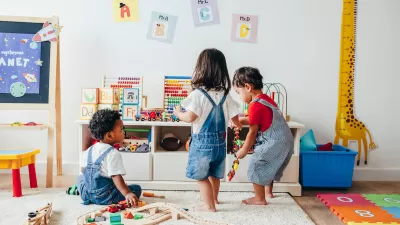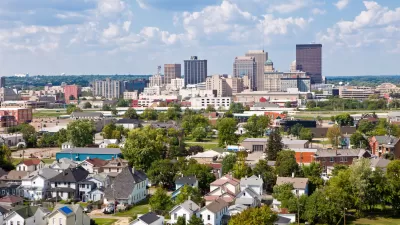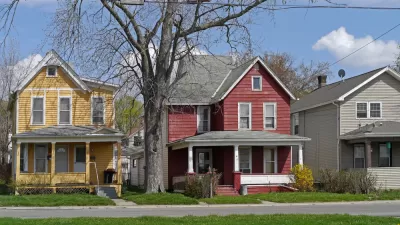Urban Land looks at the reinvention of America's inner-ring suburbs. The authors explore the challenges of mixing uses, integrating cars and attaining authenticity as planners and developers seek the right recipe for the next big wave of development.
"As inner-ring suburbs in the United States become denser, demand for access to nearby walkable urban environments is rising," write D. Jamie Rusin, Ryan Call and Sean Slater. "Residents are looking for shorter driving distances to commercial, cultural, leisure, and work opportunities. Municipalities are also interested in promoting compact development near transit. As a result, the next big wave of development will focus on creating nodes of mixed-use infill projects in these suburbs."
"Whereas the revitalization of the core of cities was the siren call for previous generations of urban planners, the focus now should be on redeveloping the anonymous arterial roads, dispersed uses, and strip centers that dominate so much of the American landscape. It is possible to create vibrant, pedestrian-friendly environments that take cues from cities built before the age of the automobile, while also accommodating the automobile in ways that work for the 21st century."
FULL STORY: New Suburbanism: Reinventing Inner-Ring Suburbs

Alabama: Trump Terminates Settlements for Black Communities Harmed By Raw Sewage
Trump deemed the landmark civil rights agreement “illegal DEI and environmental justice policy.”

Planetizen Federal Action Tracker
A weekly monitor of how Trump’s orders and actions are impacting planners and planning in America.

The 120 Year Old Tiny Home Villages That Sheltered San Francisco’s Earthquake Refugees
More than a century ago, San Francisco mobilized to house thousands of residents displaced by the 1906 earthquake. Could their strategy offer a model for the present?

LA’s Tree Emergency Goes Beyond Vandalism
After a vandal destroyed dozens of downtown LA trees, Mayor Karen Bass vowed to replace them. Days later, she slashed the city’s tree budget.

Sacramento Leads Nation With Bus-Mounted Bike Lane Enforcement Cameras
The city is the first to use its bus-mounted traffic enforcement system to cite drivers who park or drive in bike lanes.

Seattle Voters Approve Social Housing Referendum
Voters approved a corporate tax to fund the city’s housing authority despite an opposition campaign funded by Amazon and Microsoft.
Urban Design for Planners 1: Software Tools
This six-course series explores essential urban design concepts using open source software and equips planners with the tools they need to participate fully in the urban design process.
Planning for Universal Design
Learn the tools for implementing Universal Design in planning regulations.
Ada County Highway District
Clanton & Associates, Inc.
Jessamine County Fiscal Court
Institute for Housing and Urban Development Studies (IHS)
City of Grandview
Harvard GSD Executive Education
Toledo-Lucas County Plan Commissions
Salt Lake City
NYU Wagner Graduate School of Public Service





























